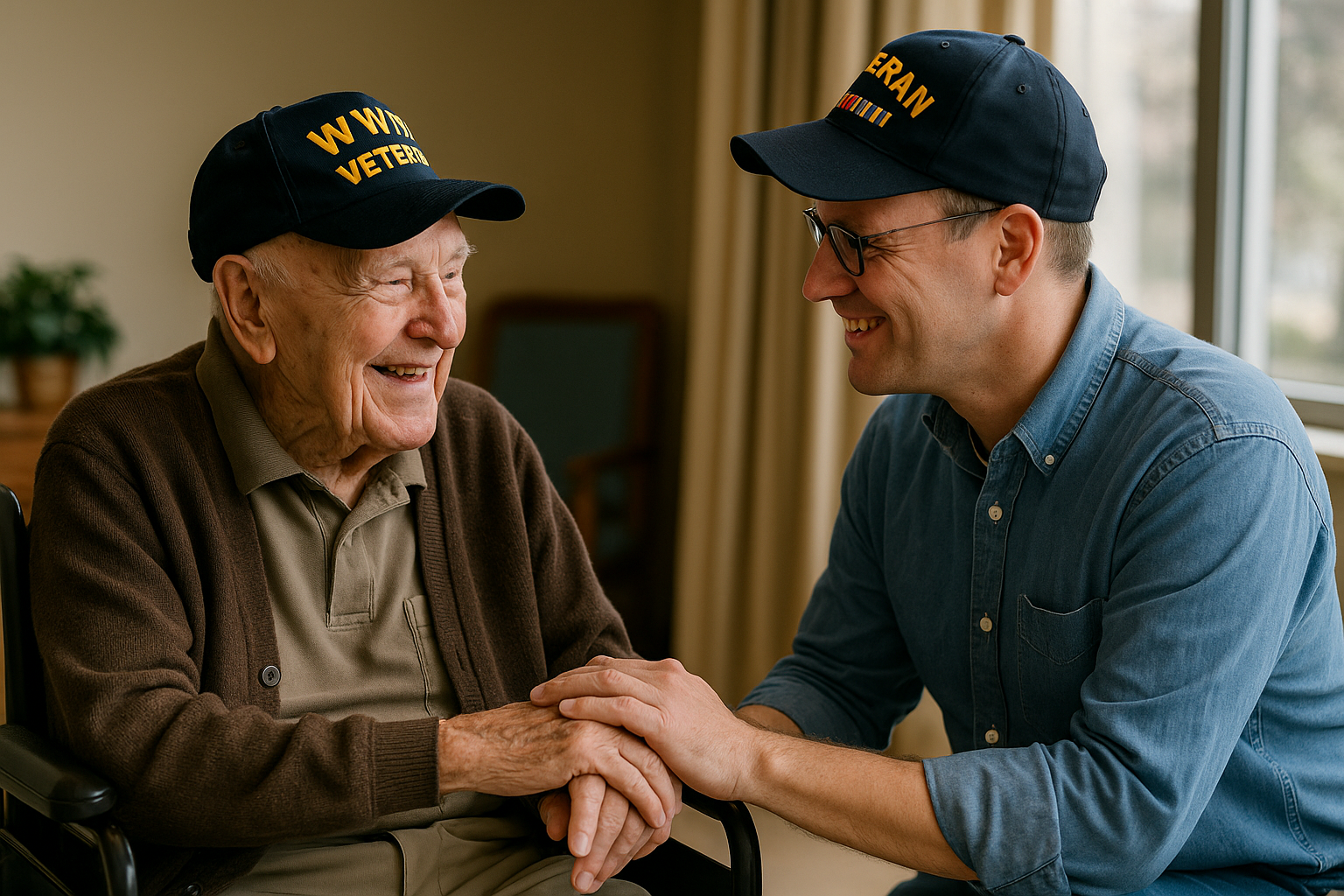In today’s long-term care landscape, every decision must serve the bottom-line. Commenting on how frequently he’s pitched buying new technology a CEO said,
“They’re not telling what the return on my investment (ROI) will be. You need to tell me how to fill the beds and keep them in the beds longer.”
As I read this, I realized that is something the NALTCV needs to consider as we promote ramping up volunteer programs in long-term care settings. Well-planned and executed volunteer programs are a resource that can achieve exactly what this CEO is asking for.
Volunteers are not just a “nice-to-have” addition to long-term care communities. They are powerful partners needed to build sustainable, resident-centered communities. Done right, volunteer programs can drive occupancy, improve retention, and act as a conduit for attracting new workers and enhancing resident satisfaction—in short, they help you fill your beds and keep them filled. We believe that they are the best investment you may not be making.
How Volunteers Contribute to Occupancy and Retention
They Increase Resident Satisfaction and Drive Referrals
Volunteers provide companionship and emotional support, creating a vibrant, social environment that residents enjoy. Numerous studies indicate that volunteers effectively improve the quality of care and quality of life of the people living in long-term communities. Families, especially those living far away, appreciate and take comfort in the knowledge that there is someone visiting their loved one when they cannot be there. As a result, families are more likely to recommend communities where residents are happy, increasing word-of-mouth referrals—a crucial factor in filling beds.
>>>Imagine: Families visiting and seeing your residents engaged, joyful, and socially connected because of a robust volunteer program. Such a sight would be a selling point in choosing your community for their loved ones.
They Enhance Your Reputation Through Community Engagement
A well-run volunteer program positions your community to be seen as innovative and community focused. This boosts your reputation among referral sources such as hospitals, case managers, and local senior organizations. An engaged, active community is far more attractive to potential residents and their families.
>>>Consider: Long-term care communities that promote individualized rather than group activities, consistently receive better satisfaction scores, which factor into many family and resident decisions when choosing long-term care options. Well-screened and trained companion volunteers can meet this need. Bus rides and bingo don’t do much to meet this need, (Lowndes, Struthers & Agotnes; 2021)
On the other hand, news spreads quickly whether it is good or bad. Similarly, many will openly give you praise but few will scorn you to your face. The reality is you may never know what they are saying about your community or why people turn away, they simply won’t come back.
They Reduce Social Isolation and encourage, Happier, Healthier Residents
Residents with consistent social interaction are less likely to experience depression, cognitive decline, or behavioral challenges. With volunteers offering companionship and non-clinical activities, your residents remain healthier and more satisfied staying longer and reducing turnover, (Bryant, Brown, & Polacsek; 2020)
>>>Remember: A community with lower resident turnover means fewer empty beds and a higher average length of stay.
They Support Staff, Which Leads to Retention and Stability
Volunteers alleviate some of the workload for your staff by handling non-clinical responsibilities, such as assisting with activities or social visits. This support reduces burnout and increases staff retention, contributing to stable care and happier residents, (de Sandes-Guimarães, L.V., dos Santos, P.C., Alves, C.P.G.P. et al.; 2023)
>>>Bonus: Families notice and appreciate consistent, long-term staff, reinforcing their confidence in your community.
The ROI of a Volunteer Program: Tangible and Intangible Gains
Volunteer programs deliver a clear return on investment by directly impacting the metrics that matter most to corporate leaders:
Higher Occupancy Rates
Engaged residents are more likely to stay longer, while satisfied families and referral partners increase admissions. Engaged residents live longer (Compassionate Care Connection, 2017).
Longer Resident Tenure
With improved quality of life, residents remain healthy and stay in your community longer, reducing costly turnover.
Stronger Brand Reputation
Community engagement enhances your image, making your community a destination of choice. People talk.
Operational Efficiency
Volunteers ease the burden on staff, improving retention and reducing recruitment costs for new employees.
Addressing Leadership Concerns: Managing Volunteer Programs Effectively
Leaders often hesitate to embrace volunteer programs due to concerns about liability, workload, or policy alignment. But these challenges are manageable:
Risk Management
While the risks of abuse or legal liability are a significant concern in nursing home settings, reports suggest that incidents involving volunteers are either exceptionally rare or underreported. Most lawsuits and abuse allegations in nursing homes focus on staff or other residents as the primary perpetrators, with very few documented cases involving volunteers. Background checks, training, and clear protocols minimize risks, (U.S. Government Accountability Office, 2019a, 2019b).
Dedicated Volunteer Coordinators
A part-time volunteer coordinator trained in volunteer management ensures volunteers are managed efficiently, easing the burden on activity staff. With this role in place, your communities benefit from higher resident satisfaction, better staff retention, and an enhanced reputation—boosting occupancy and positioning your brand as a leader in compassionate care.
Corporate Alignment
Volunteer programs can be integrated into broader corporate goals, such as improving satisfaction metrics and meeting regulatory benchmarks. A well-managed volunteer program supports key performance metrics, including higher resident satisfaction scores, which are critical for driving occupancy and retention. Additionally, these programs contribute to meeting regulatory benchmarks by enhancing quality-of-life measures and promoting resident-centered care—factors that regulators and families increasingly prioritize.
Leveraging NALTCV to Build Your Volunteer Program
At NALTCV, we are committed to partnering with long-term care leaders to develop meaningful volunteer programs that align with their operational goals. While we are still building out our full suite of resources, here’s how we can support you:
Consultation and Guidance
We offer insight into best practices for starting a volunteer program and can help you identify early opportunities for success.
Volunteer Engagement Strategies
Our team provides advice on how to recruit and retain volunteers who align with your community’s culture and needs.
Collaboration Opportunities
We connect you with other organizations and leaders who have implemented effective volunteer programs, so you can learn from their experiences and strategies.
While our resources are growing, we are committed to being a strategic partner as you develop your program. NALTCV is here to walk with you step-by-step, offering support, ideas, and connections to ensure your volunteer program takes root and thrives.
Conclusion: The Competitive Advantage of Volunteers
The CEO’s words—“You need to tell me how to fill the beds and keep them in the beds longer”— while sounding a bit harsh it does speak to the reality and priorities of every long-term care leader. Volunteer programs are an effective, low-cost way to meet these goals. They enhance resident satisfaction, foster community engagement, and ease staff burdens—all contributing to higher occupancy and longer stays.
Volunteers are more than helpers—they are partners in building thriving, sustainable communities. If your community isn’t leveraging volunteers yet, now is the time to start. Partner with NALTCV to unlock the potential of volunteers and build a community that residents want to join—and stay in. Ready to take the next step? Contact NALTCV to explore how we can help you build or enhance your volunteer program. Together, we can help you fill your beds, keep them filled, and create a community where everyone thrives.
Take the next step…
Contact NALTCV to explore how we can help you build or enhance your volunteer program. Together, we can help you fill your beds, keep them filled, and create a community where everyone thrives.
References:
Bryant, C., Brown, L., Polacsek, M. et al. Volunteer-led behavioral activation to reduce depression in residential care: a feasibility study. Pilot Feasibility Stud 6, 95 (2020). https://doi.org/10.1186/s40814-020-00640-y
Compassionate Care Connection. (2017, July 10). The impact of moving to a long-term care facility on length of life. Compassionate Care Connection. Retrieved from https://ccconnection.net/the-impact-ofmoving-to-long-term-care-facility-on-length-of-life/
de Sandes-Guimarães, L.V., dos Santos, P.C., Alves, C.P.G.P. et al. (2023). The effect of volunteer-led activities on the quality of life of volunteers, residents, and employees of a long-term care institution: a cohort study. BMC Geriatr 23, 151. https://doi.org/10.1186/s12877-023-03898-y
Lowndes, R., Struthers, J., & Ågotnes, G. (2021). Social Participation in Long-term Residential Care: Case Studies from Canada, Norway, and Germany. Canadian Journal on Aging / La Revue Canadienne Du Vieillissement, 40(1), 138–155. doi:10.1017/S0714980820000318
U.S. Government Accountability Office. (2019, June). Nursing Homes: Improved Oversight Needed to Better Protect Residents from Abuse. Retrieved from https://www.gao.gov
U.S. Government Accountability Office. (2019, November 14). Nursing Homes: Better Oversight Needed to Protect Residents from Abuse. GAO-20-259T. Retrieved from https://www.gao.gov




